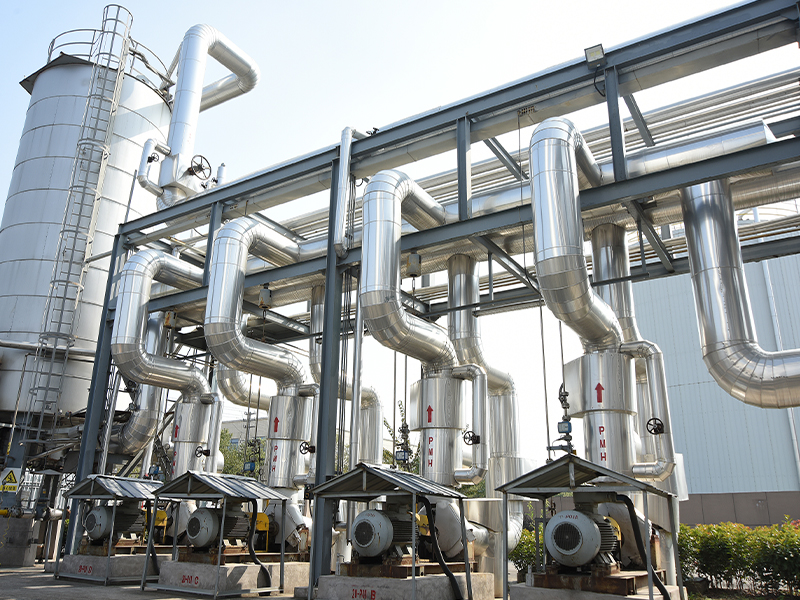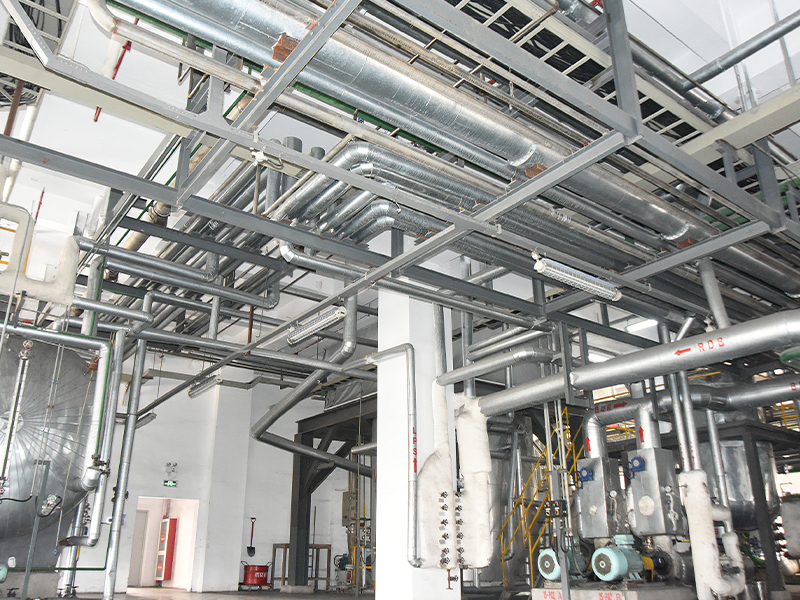Imagine walking into a facility where every detail of the environment is under control — the air feels still, the lighting is balanced, and every surface is spotless. In such spaces, even the smallest particle can affect the outcome of a process. This is where a clean room partition becomes essential. It is not just a wall; it is a strategic component that divides a controlled area into functional zones, helping industries manage precision tasks while minimizing contamination risks.
From pharmaceuticals to electronics, many production environments depend on these partitions to separate activities that require different levels of cleanliness. They act as silent enablers of order, allowing specific operations to proceed without interference from surrounding work. A well-thought-out partition layout supports workflow efficiency, enhances environmental stability, and helps meet industry-specific hygiene expectations.
What is a Clean Room Partition
A clean room partition is a structural element designed to create defined sections within a controlled environment. Unlike standard interior walls, it is specifically intended for spaces where air quality, cleanliness, and workflow separation are essential to the process. These partitions serve both functional and operational purposes, acting as barriers that manage airflow patterns, limit particle transfer, and allow activities with different cleanliness requirements to occur side by side without interference.
In manufacturing industries, Clean Room Partition help create work zones that match the specific needs of each production stage. For example, one area may focus on assembly under strict cleanliness protocols, while another handles packaging in a slightly different environment. By having partitions in place, facilities can maintain separate operational standards within the same overall clean room.
The design of a clean room partition can vary depending on the type of industry, available space, and level of environmental control required. Some are modular, allowing easy reconfiguration when production needs change, while others are semi-permanent, providing long-term stability. Materials are chosen not only for durability but also for ease of cleaning and compatibility with the facility's air filtration systems.
These partitions also contribute to better organization of space. By clearly defining boundaries, they make it easier to manage equipment placement, movement of personnel, and routing of utilities. In addition, they can support visual monitoring between zones when transparent or semi-transparent panels are used, enabling teams to work efficiently without unnecessary disruption.
Ultimately, a clean room partition is more than a divider. It is part of an integrated approach to maintaining a stable and compliant environment, supporting the operational goals of industries that depend on precision and consistency in their production processes.
Why is it Important in Manufacturing Industries?
In manufacturing, precision and organization are critical. A clean room partition helps facilities maintain a structured environment where different processes can coexist without interference. These partitions create physical boundaries that support cleanliness, workflow clarity, and operational safety.
Benefits of Clean Room Partition
- Controlled Production Zones
Partitions allow manufacturers to separate areas for specific tasks, reducing the chance that particles, dust, or moisture from one section affect another. - Enhanced Workflow Management
Clear boundaries help staff know where to operate, improving coordination and minimizing operational overlap. - Environmental Stability
By guiding airflow and limiting contamination, partitions contribute to consistent conditions for sensitive processes. - Adaptable Layouts
Modular or semi-permanent designs make it easier to adjust production areas when requirements change.
Types of Clean Room Partition
Clean room partitions are designed to organize controlled environments efficiently. Selecting the appropriate type depends on workflow needs, flexibility requirements, and the level of environmental control required.
1. Modular Partitions
Modular partitions are composed of pre-fabricated panels that can be reassembled or expanded as operational requirements change.
-
Key Features:
-
Adjustable layout configurations
-
Quick installation with minimal disruption
-
Supports flexible space management
-
-
Applications: Laboratories, production areas with evolving workflows
2. Semi-Permanent Partition
Semi-permanent partitions provide long-term separation while maintaining some adaptability.
-
Key Features:
- Consistent boundary for critical processes
- Integration with air handling and monitoring systems
- Durable and low-maintenance structure
- Applications: Electronics assembly, medical device production, areas with stable operational needs
3. Demountable or Removable Panels
Demountable panels offer temporary divisions for spaces that require flexibility.
- Key Features:
- Can be removed or replaced easily
- Suitable for short-term changes in layout
- Supports easy cleaning and maintenance
- Applications: Temporary production zones, project-specific partitions, testing areas
| Type | Flexibility | Stability | Typical Use Case |
|---|---|---|---|
| Modular | High | Moderate | Dynamic workflows, adaptable labs |
| Semi-Permanent | Moderate | High | Stable production areas, assembly |
| Demountable/Removable | High | Moderate | Temporary zones, layout adjustments |
Material Considerations
Partitions commonly use materials such as aluminum frames, composite panels, or tempered glass. Selection focuses on:
- Durability and structural stability
- Ease of cleaning and maintenance
- Compatibility with airflow and filtration systems
- Visual transparency if visibility between zones is needed
This structured overview highlights the functional differences among partition types, helping facilities maintain clean environments while optimizing workflow and operational efficiency.
Key Features & Considerations
A Clean Room Partition is designed to maintain controlled environments, and understanding its key features is essential for optimizing workflow and supporting operational standards. Several factors influence its selection and implementation.
Primary Features
- Environmental Control
The partition helps manage airflow and reduce particle transfer between zones, supporting consistent conditions for sensitive processes.
- Structural Flexibility
Modular or demountable partitions allow reconfiguration as operational needs change, while semi-permanent partitions provide stable separation.
- Ease of Maintenance
Materials and surface finishes are chosen for durability and cleanability, enabling routine cleaning without affecting environmental standards.
- Integration with Facility Systems
The partition is compatible with air filtration, lighting, and monitoring systems, ensuring environmental control measures function effectively.
Considerations for Selection
When choosing a Clean Room Partition, several considerations are important:
Workflow Requirements
Ensure that staff, equipment, and material movement are not obstructed by the partition.
Adaptability Needs
Determine if the partition should allow future layout or production changes.
Compliance and Standards
The partition should support adherence to hygiene, contamination control, and operational regulations.
Material and Finish
Select materials that resist wear, chemical exposure, and frequent cleaning while maintaining environmental stability.
Features and Considerations
| Feature/Consideration | Description |
|---|---|
| Environmental Control | Reduces particle transfer, maintains stable airflow |
| Structural Flexibility | Modular or semi-permanent options to suit operational needs |
| Maintenance Ease | Durable surfaces suitable for regular cleaning |
| Facility Integration | Compatible with HVAC, lighting, and monitoring systems |
| Workflow Optimization | Supports efficient movement of staff and materials |
| Compliance Support | Assists in maintaining hygiene and contamination control |
By evaluating these features and considerations, a facility can implement a Clean Room Partition that balances flexibility, operational efficiency, and environmental control. This ensures sensitive processes are protected and production areas remain organized.
How Partition Help Create Segregated Zones in Clean Room
A Clean Room Partition plays a vital role in organizing a controlled environment into separate operational zones. Segregation allows different processes to coexist efficiently while maintaining environmental stability.
Functions of Segregation
Airflow Management
Partitions guide air circulation to limit particle movement between zones, helping maintain consistent cleanliness levels.
Task Separation
Different activities such as assembly, inspection, or packaging can occur simultaneously without interfering with each other.
Operational Clarity
Defined boundaries provide staff with clear guidance, reducing workflow confusion and improving efficiency.
Contamination Control
Physical separation helps reduce the risk of cross-contamination, supporting hygiene and regulatory compliance.
Advantages of Segregated Zones
| Advantage | Description |
|---|---|
| Controlled Environment | Maintains stable conditions in each zone |
| Task Efficiency | Reduces interference between processes |
| Compliance Assistance | Supports adherence to hygiene and contamination standards |
| Layout Flexibility | Modular or demountable partitions allow adaptation as needs change |
Considerations for Effective Segregation
1.Strategic Partition Placement
Position partitions to separate operations requiring different environmental standards.
2.Access Management
Design doors or access points to limit unnecessary movement between zones.
3.Visibility and Supervision
Use transparent or semi-transparent panels to allow monitoring while maintaining separation.
4.System Integration
Ensure partitions are compatible with ventilation, lighting, and monitoring systems to preserve controlled conditions.
By implementing a Clean Room Partition to establish segregated zones, facilities can protect sensitive processes, enhance workflow efficiency, and maintain compliance with industry standards. Proper zone creation ensures that multiple operations can occur safely and effectively within the same environment.
Why Should You Choose Yd-Purification for Clean Room Partition?
Choosing a reliable supplier for a Clean Room Partition helps maintain organized workflows and stable environmental conditions. Yd-Purification offers solutions designed for flexibility, durability, and regulatory compliance.
- Stable Environment: Supports airflow management and helps reduce particle transfer.
- Flexible Options: Modular, semi-permanent, and demountable partitions for various needs.
- Compliance Support: Compatible with hygiene and contamination control standards.
- Easy Maintenance: Materials and surfaces allow regular cleaning without affecting stability.
Partnering with Yd-Purification ensures that your Clean Room Partition supports smooth operations and controlled conditions.

 English
English русский
русский Español
Español





